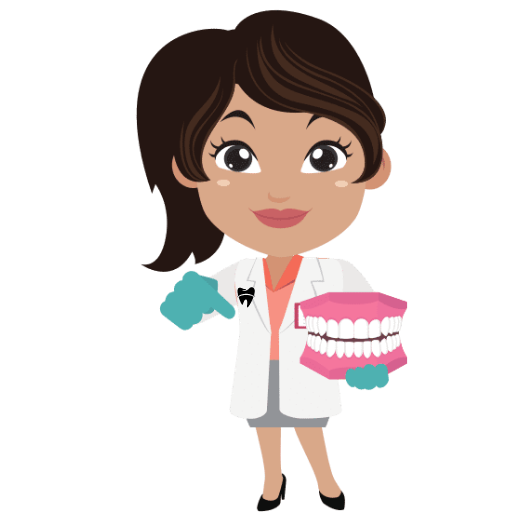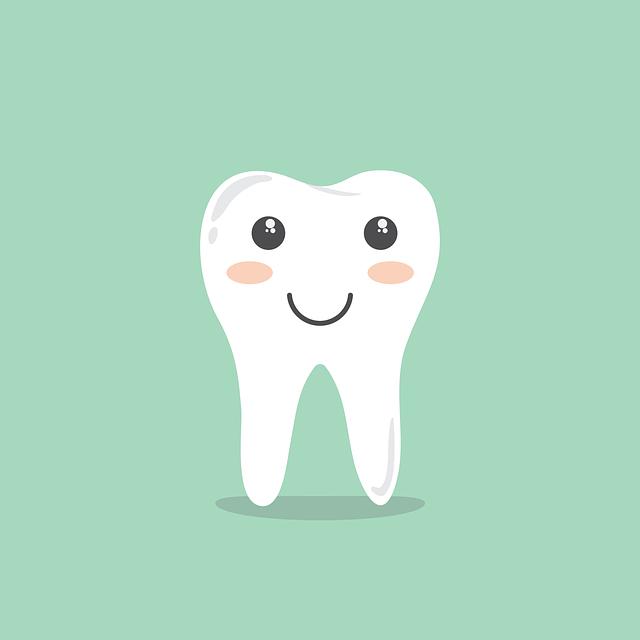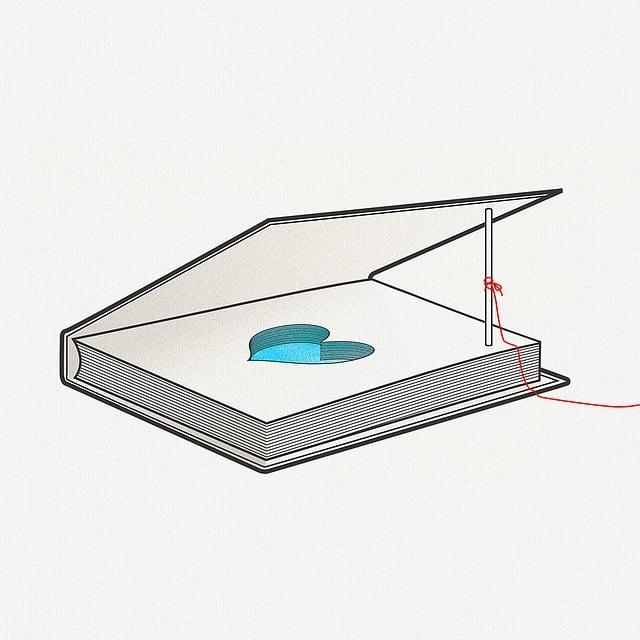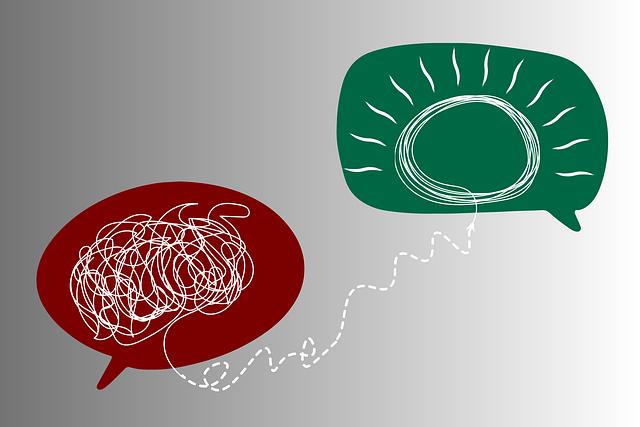Do you often wake up with a sore jaw or teeth? Is it bruxism or TMJ? Discover the difference and debunk dental terms in this informative article!
1. Understanding the Key Differences: Is Bruxism the Same as TMJ Disorder?
Bruxism and TMJ disorder are two distinct conditions that often get confused due to some similarities. Let’s dive into the key differences between these two oral health issues:
- Definition: Bruxism refers to the habit of grinding or clenching your teeth, especially during sleep, while TMJ disorder, short for temporomandibular joint disorder, involves problems with the jaw joint and surrounding muscles.
- Symptoms: Bruxism may lead to tooth sensitivity, headaches, and worn-down teeth, whereas TMJ disorder typically presents with jaw pain, clicking or popping sounds, difficulty chewing, and even earaches.
- Causes: Bruxism can be triggered by stress, anxiety, or an abnormal bite, while TMJ disorder often stems from factors like jaw injury, arthritis, or teeth misalignment.
- Treatment: Treating bruxism may involve mouthguards to protect teeth, stress management techniques, and addressing any underlying dental issues. TMJ disorder treatments focus on pain management, anti-inflammatory medications, physical therapy, or in severe cases, surgery.
Understanding the distinctions between bruxism and TMJ disorder is crucial for accurate diagnosis and appropriate treatment. Consulting with a dental professional is advisable in case you experience any persistent symptoms related to these conditions.
2. Shedding Light on Dental Terminology: Differentiating Between Bruxism and TMJ
Understanding dental terminology can be quite confusing, especially when different conditions are closely related. Two conditions that often cause confusion are Bruxism and TMJ. While both can affect the jaw and cause discomfort, they are distinct in their causes and symptoms. Here, we shed light on the differences between these two dental conditions:
- Bruxism: This condition refers to the habitual grinding or clenching of teeth, typically during sleep. Common symptoms of bruxism include headaches, tooth sensitivity, jaw muscle soreness, and worn-down tooth surfaces. In many cases, stress or anxiety plays a significant role in triggering bruxism. Addressing the underlying stress factors and wearing a nightguard can help mitigate the effects of bruxism.
- TMJ (Temporomandibular Joint) Disorder: TMJ disorder affects the temporomandibular joint, which connects the jaw to the skull. Symptoms vary but often involve jaw pain, difficulty in opening or closing the mouth, clicking or popping sounds, and earaches. The exact cause of TMJ disorder is often unknown, but it can be exacerbated by factors such as jaw injuries, arthritis, or teeth misalignment. Treatment for TMJ disorder typically includes pain management strategies, physical therapy, and, in severe cases, oral surgery.
By understanding these distinctions, you can better communicate with your dentist and seek appropriate treatment for your specific condition. Remember, a proper diagnosis from a dental professional is crucial in order to receive the most effective care.
3. Demystifying Bruxism and TMJ: What Sets the Two Apart?
Bruxism and TMJ are two commonly misunderstood dental conditions that often go hand in hand. However, it’s important to recognize the distinct features that set them apart:
Differences between Bruxism and TMJ:
- Bruxism is characterized by the habitual clenching or grinding of teeth, usually during sleep. This condition can lead to worn tooth enamel, jaw pain, and headaches. On the other hand, TMJ refers to dysfunction in the temporomandibular joint, responsible for jaw movement. Symptoms of TMJ disorder include a clicking or popping sound, difficulty in opening or closing the mouth, and facial pain.
- Cause: While bruxism is often attributed to stress, anxiety, or misaligned teeth, TMJ disorder can arise from a variety of factors including genetics, trauma to the jaw, or arthritis.
- Treatment: Treatment for bruxism typically involves wearing a dental appliance, such as a nightguard, to protect teeth from grinding. For TMJ disorder, treatment options may include medication, physical therapy exercises, or in severe cases, surgery.
As with any dental issue, it’s essential to consult with a qualified dental professional for an accurate diagnosis and personalized treatment plan. Understanding the differences between bruxism and TMJ will enable you to take the necessary steps for a successful treatment outcome.
4. Bruxism vs. TMJ: Exploring Distinct Dental Conditions and Their Symptoms
Bruxism and TMJ are two distinct dental conditions that can cause discomfort and affect oral health. While they share some similarities, understanding the differences between the two can help in identifying and managing the symptoms effectively.
Bruxism:
Bruxism refers to the involuntary grinding, clenching, or gnashing of teeth, often occurring during sleep. It can lead to a range of oral health issues and is often associated with stress, anxiety, or an abnormal bite. Some common symptoms of bruxism include:
- Frequent headaches or migraines
- Jaw muscle fatigue or stiffness
- Worn-down tooth surfaces
- Tooth sensitivity
TMJ (Temporomandibular Joint Disorders):
TMJ refers to a group of conditions that affect the temporomandibular joint, which connects the jawbone to the skull. TMJ disorders can cause pain and dysfunction in the jaw joint and surrounding muscles. Some common symptoms of TMJ disorders include:
- Pain or tenderness in the jaw
- Clicking or popping sounds when opening or closing the mouth
- Difficulty chewing or discomfort while eating
- Locked or limited jaw movement
If you are experiencing any of these symptoms, it is essential to consult a dental professional for an accurate diagnosis and appropriate treatment plan. While some self-care strategies can provide temporary relief, an expert’s advice is crucial to address the underlying cause and prevent further complications.
5. Unraveling the Complexity: Distinguishing Bruxism from Temporomandibular Joint Disorder (TMJ)
Bruxism and Temporomandibular Joint Disorder (TMJ) are two closely related conditions that often lead to jaw pain and discomfort. However, it’s important to understand the distinctions between the two in order to provide appropriate treatment. Here, we will unravel the complexity and help you understand how to differentiate between bruxism and TMJ.
1. Definition: Bruxism refers to the involuntary grinding, gnashing, or clenching of teeth, typically during sleep. On the other hand, TMJ is a disorder affecting the temporomandibular joint, which connects the jawbone to the skull. TMJ can result in jaw pain, clicking or popping sounds, limited jaw movement, and headaches.
2. Causes: Bruxism often stems from stress, anxiety, or abnormal bite alignment. It can also be a side effect of certain medications or sleep disorders. TMJ, on the other hand, can be caused by joint inflammation, cartilage damage, jaw misalignment, or trauma to the jaw. Identifying the underlying cause is crucial for effective treatment.
3. Symptoms: Common symptoms of bruxism include worn-down teeth, jaw soreness, headaches, and disturbed sleep. TMJ, however, presents a wider range of symptoms, including facial pain, difficulty chewing, earaches, and neck and shoulder pain. These differing symptoms can provide valuable clues in distinguishing between the two conditions.
Understanding the differences between bruxism and TMJ is essential for accurate diagnosis and appropriate treatment. If you suspect you may be experiencing either of these conditions, it is recommended to consult a dental professional or maxillofacial specialist to receive a thorough evaluation and develop an individualized treatment plan.
6. Decoding Dental Jargon: A Closer Look at Bruxism and TMJ
Bruxism and Temporomandibular Joint (TMJ) disorder are dental conditions that can cause significant discomfort and damage if left untreated. Understanding these terms can help shed light on the underlying causes and potential treatments:
Bruxism:
- Bruxism refers to the habitual clenching or grinding of teeth, often unconsciously during sleep or times of stress.
- Common signs of bruxism include worn-down tooth surfaces, frequent headaches, jaw pain, and even fractured teeth.
- Stress management techniques, wearing a nightguard, and practicing good oral hygiene are essential in alleviating the symptoms of bruxism.
Temporomandibular Joint Disorder (TMJ):
- TMJ disorder affects the joint connecting the jawbone to the skull, causing pain and limited movement of the jaw.
- Individuals with TMJ disorder may experience jaw clicking or popping, jaw muscle stiffness, and difficulty chewing or opening their mouths fully.
- Treatment approaches for TMJ disorder often involve a combination of pain medication, physical therapy exercises, and wearing a custom splint or dental appliance to relieve pressure on the joint.
Understanding the jargon associated with bruxism and TMJ can empower you to communicate effectively with your dentist and make informed decisions about your dental health. If you experience any of the symptoms mentioned, consulting a dental professional is crucial for an accurate diagnosis and tailored treatment plan.
7. Separating Fact from Fiction: Dispelling Myths about Bruxism and TMJ
Bruxism and TMJ are widely discussed topics, but unfortunately, there are many misconceptions that surround them. Let’s take a closer look at some common myths and separate fact from fiction.
- Myth 1: Bruxism only affects adults.
- Fact: Bruxism can affect individuals of all ages, including children. While it is more common in adults, many children also grind or clench their teeth during sleep.
- Myth 2: Bruxism and TMJ are the same thing.
- Fact: Bruxism refers to the act of grinding or clenching teeth, while TMJ (temporomandibular joint) disorder is a condition that affects the joint connecting the jawbone to the skull. Bruxism can, however, contribute to or worsen TMJ symptoms.
- Myth 3: Stress is the sole cause of bruxism.
- Fact: While stress can be a contributing factor, bruxism can also be caused by various other factors such as misaligned teeth, sleep disorders, and even certain medications.
- Myth 4: Bruxism always leads to dental problems.
- Fact: While bruxism can cause dental issues such as worn-down teeth, jaw pain, and headaches, not everyone who grinds their teeth will experience these problems. However, it is still essential to address the underlying cause of bruxism to prevent further complications.
By dispelling these myths, we can gain a clearer understanding of bruxism and TMJ. It is important to consult with a dental professional to obtain an accurate diagnosis and tailor a treatment plan specific to your needs.
8. Unveiling the Truth: Clearing Up Confusion Surrounding Bruxism and TMJ Disorder
Bruxism and TMJ disorder are two commonly misunderstood dental conditions that can significantly impact a person’s oral health. Let’s shed light on the truth behind these conditions and clear up any confusion surrounding them.
Firstly, bruxism refers to the unconscious grinding, clenching, or gnashing of teeth, usually during sleep. This condition can lead to a range of issues such as worn enamel, jaw pain, headaches, and even tooth fractures. Identifying the signs of bruxism is crucial for timely intervention. These signs may include unexplained sensitivity, flattened tooth surfaces, and tight or fatigued jaw muscles.
On the other hand, TMJ disorder affects the temporomandibular joint, which connects the jawbone to the skull. Contrary to popular belief, TMJ disorder is not a dental problem but rather a joint disorder. Common symptoms involve jaw clicking, limited jaw movement, pain around the ear or temple area, and difficulty chewing. It’s essential to understand that bruxism can be a contributing factor to TMJ disorders, but they are distinct conditions that require different treatment approaches.
To properly address bruxism and TMJ disorder, seeking professional dental care is essential. Dentists often recommend a combination of treatments such as a custom-made nightguard to alleviate bruxism-related symptoms and reduce teeth grinding. For TMJ disorders, treatment may involve lifestyle changes, physical therapy, and in severe cases, surgical intervention. As always, early diagnosis and intervention can help prevent further damage and ensure a healthier, pain-free smile.
- Bruxism is the unconscious grinding, clenching, or gnashing of teeth, usually during sleep.
- TMJ disorder affects the temporomandibular joint that connects the jawbone to the skull.
- Bruxism can be a contributing factor to TMJ disorders, but they are distinct conditions.
- Signs of bruxism include worn enamel, jaw pain, headaches, tooth fractures, and flattened tooth surfaces.
- TMJ disorder symptoms include jaw clicking, limited jaw movement, pain around the ear or temple area, and difficulty chewing.
- Professional dental care is necessary for proper diagnosis and tailored treatment plans.
- Treatments for bruxism may involve the use of custom-made nightguards.
- TMJ disorder treatments may include lifestyle changes, physical therapy, or surgical intervention in severe cases.
9. Understanding Bruxism and TMJ: How to Tell the Difference
Bruxism and TMJ are two common dental conditions that can cause discomfort and pain. Understanding the difference between the two is crucial for effective diagnosis and treatment. Let’s delve into these conditions and learn how to tell them apart:
Bruxism: Also known as teeth grinding or clenching, bruxism is a condition characterized by the involuntary grinding or clenching of teeth. It often occurs during sleep and can lead to dental problems such as worn-down teeth, jaw pain, headaches, and facial muscle discomfort. Bruxism can have various causes, including stress, anxiety, sleep disorders, and even certain medications. If you notice these symptoms or if your partner complains about the noise, it is essential to consult a dentist.
TMJ disorder: TMJ, short for temporomandibular joint disorder, refers to a condition that affects the jaw joint and surrounding muscles. It can cause a range of symptoms including jaw pain, clicking or popping sounds in the jaw, difficulty chewing, and even earaches. TMJ disorder can result from factors such as jaw misalignment, teeth grinding (bruxism), injury to the jaw, or arthritis. To differentiate between bruxism and TMJ, it is best to consult a dentist who can conduct a thorough examination and provide an accurate diagnosis.
- Bruxism is characterized by involuntary teeth grinding or clenching, while TMJ disorder affects the jaw joint and surrounding muscles.
- Bruxism often occurs during sleep, whereas TMJ disorder can cause symptoms throughout the day.
- Both conditions may involve jaw discomfort or pain, but TMJ disorder can also result in clicking or popping sounds in the jaw joint.
Remember, even though bruxism and TMJ disorder share some symptoms, a professional evaluation is necessary for a correct diagnosis. With a proper understanding of these conditions, you can take the necessary steps to seek appropriate treatment and find relief from the discomfort they may cause.
10. A Comprehensive Breakdown: Dissecting the Relationship between Bruxism and Temporomandibular Joint Disorder
Bruxism, commonly known as teeth grinding, has long been associated with Temporomandibular Joint Disorder (TMJ). In this comprehensive breakdown, we will delve into the intricate relationship between these two conditions, shedding light on their interconnection and potential impacts.
1. Bruxism as a contributing factor: Studies have shown that individuals with TMJ disorder are more likely to experience bruxism. The clenching and grinding actions exert excessive pressure on the temporomandibular joint, exacerbating the symptoms of TMJ disorder.
2. Shared symptoms: Both bruxism and TMJ disorder share common symptoms such as jaw pain, headaches, and difficulty in opening or closing the mouth. These overlapping indicators make it challenging to diagnose one condition without considering the other.
3. Causal relationship: While bruxism contributes to TMJ disorder, a causal relationship also exists. The constant grinding motion puts strain on the jaw joint, leading to inflammation and potential misalignment. This, in turn, can further intensify bruxism symptoms.
Understanding the connection between bruxism and TMJ disorder is crucial for effective diagnosis and treatment. By addressing both conditions concurrently, dental professionals can develop personalized approaches to alleviate symptoms and improve the overall well-being of patients.
In conclusion, knowing the difference between bruxism and TMJ is crucial for a better understanding of dental health. Remember, bruxism involves teeth grinding, while TMJ refers to jaw joint disorders. Be proactive in seeking professional advice to address any concerns in order to maintain a healthy and functional smile.





